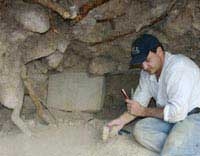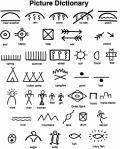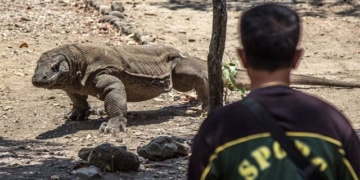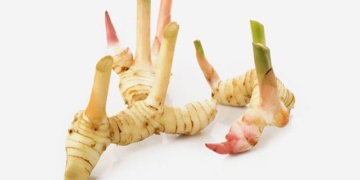An ancient burial site with a diameter of up to 75 meters in Europe has startled archaeologists due to the skull of a wild animal placed in a rather prominent position.
According to Heritage Daily, this ancient burial ground was discovered in the Dobruja region of Romania and dates back approximately 2,000 years. It is a collective burial mound, featuring a large pit containing cremated remains and various grave goods.
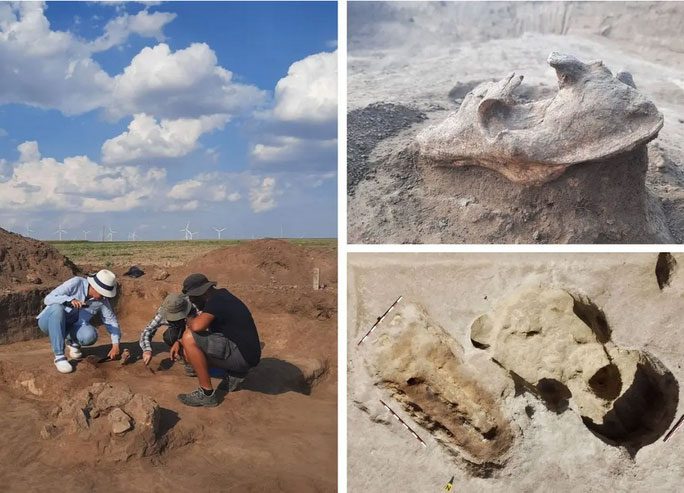
Excavation site and the wild animal skull “guarding” the ancient burial mound – (Photo: POLISH ACADEMY OF SCIENCES INSTITUTE OF ARCHAEOLOGY AND ETHNOLOGY).
What drew the most attention was the uppermost part of the remains. The archaeologists were astonished to discover the skull of a wild animal placed on a pile of stones.
The study led by Dr. Bartlomiej Szymon Szmoniewski from the Institute of Archaeology and Ethnology – Polish Academy of Sciences revealed that the monstrous skull was not buried alongside human remains in the grave, but rather belonged to an ancient grave robbing ritual.
The burial mound showed signs of being excavated, indicating it had been plundered multiple times in the past. One of the grave robbing gangs erected the strange stone mound with this animal skull as a form of “protective talisman.”
“It could have been a ritual to seal the looted space, blocking the escape and revenge of the plundered souls,” Dr. Szmoniewski commented.
This group of grave robbers may have originated from the Getae tribe, who lived in the regions along both banks of the lower Danube River.
In addition to the ancient burial mound, the research team also discovered a second grave containing a skeleton within a wooden structure, accompanied by numerous grave goods, including a glass jar, a box for flowers and perfumes, and a Hadrian coin (issued between 125-127 AD) placed in the deceased’s mouth.









































